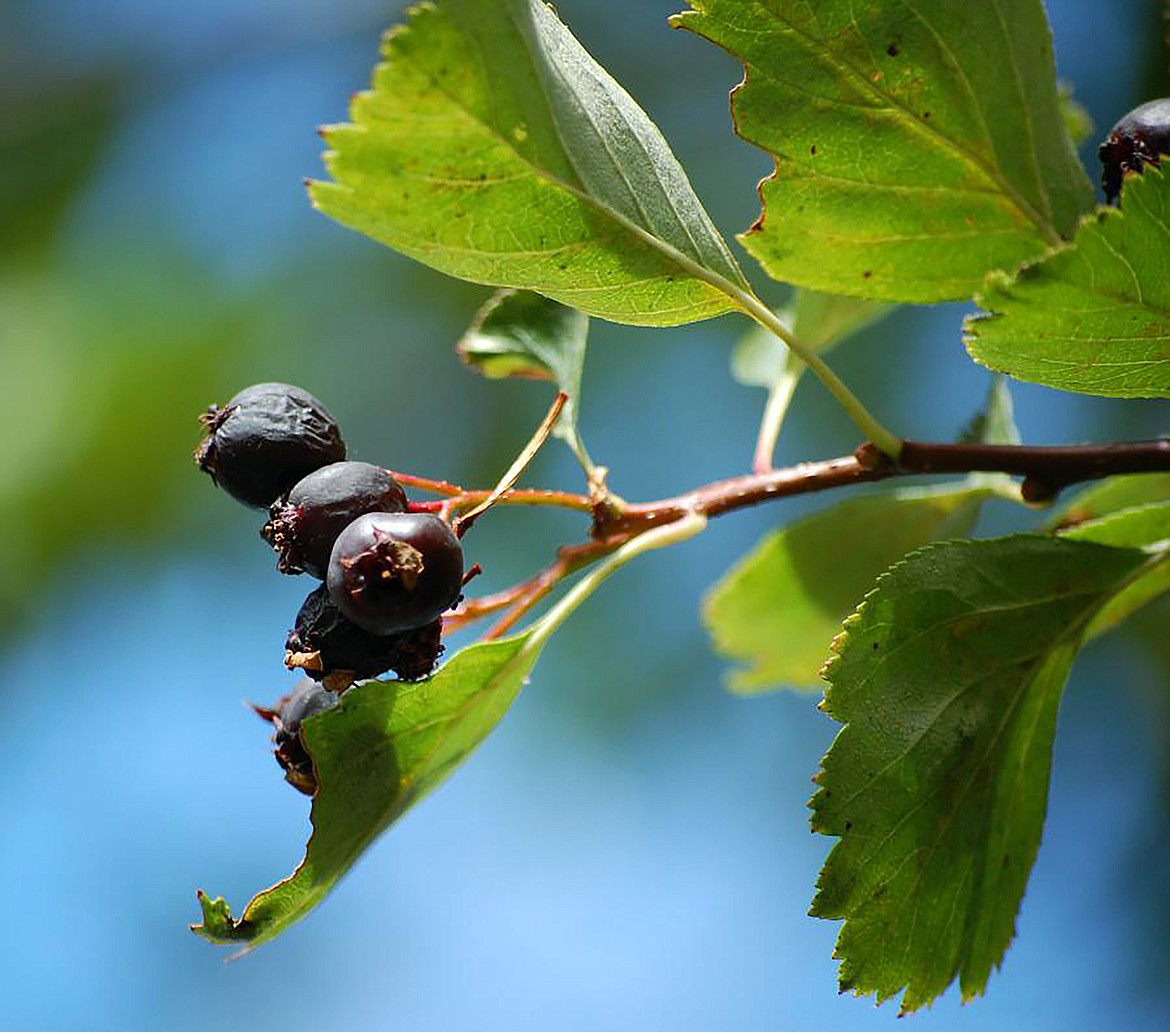Black Hawthorn offers beauty, function for area gardens
Botanists consider Black Hawthorn (Crataegus douglasii) a shrub, but it can reach as tall as 40 feet with upright branches forming a rounded crown. Like the rose, this member of the Rosaceae family has thorns along its branches. They are thin, sharp, spine-like and an inch long or more.
Planted in rows, Black Hawthorn makes an impenetrable hedge forming a refuge for birds and small mammals.
Abundant in northwestern North America, Black Hawthorn's white floral display appears usually in May and is often called Mayflower. Other common names include Douglas' Thornapple, Black Hawberry, and Western Thornapple. The Chippewa name for Black Hawthorn is “mine’saga’wunj” meaning “having fruit and also spikes.” Its species name douglasii honors David Douglas, the Scottish botanist sent in 1823 by the Royal Horticultural Society of England to explore and collect plants in America.
In the northern hemisphere Hawthorn is a confusing genus with hundreds of species due to natural hybridization and polyploidy, a condition where plants multiply the number of chromosomes in their cells. This creates a classification nightmare for botanists trying to discover who is related to whom in the plant world.
In spring, showy clusters of small white flowers appear, each with five petals and ten stamens bearing yellow-orange anthers (the pollen bearing male part of the flower) that extend into or beyond the ring of petals. The flowers are fragrant, though they have been occasionally described as “stinky.”
Small, dark purple to black pome fruits, called haws, appear in late summer. Somewhat resembling a tiny apple with hard seeds inside, the haws may be eaten raw or cooked. The flesh is juicy with a pleasant flavor, tasty in pies and other fruit desserts. Rich in pectin, haws may be mixed with other low pectin fruits for jams and jellies. Wildlife and birds browse on the leaves and fruits, though they are not highly favored.
The leaves of Black Hawthorn are dark green, thick and leathery in texture. They are oval in shape with smooth edges at the stem end becoming toothed near the tip. In the fall they turn a brilliant orange-red color before dropping for winter.
Black Hawthorn wood is hard and desirable for tool handles and weapons. Native Americans used the thorns as rake tines and fishooks. Black Hawthorn also enjoyed many medicinal uses, including as a needle to lance boils. Long renowned in folk medicine for heart ailments, modern research has confirmed that it is hypotensive, and is effective as a treatment for a weak heart combined with high blood pressure. The most popular medicinal forms of Black Hawthorn are as a tincture or tea from the fruits and flowers.
Found frequently on stream banks, Black Hawthorn prefers moist, well-drained sites in open woods and forest edges. In an informal landscape it can be trained as a small tree or planted in a row to create a thick hedge with showy spring flowers and colorful fall foliage. Its spreading roots are good for restoration projects where erosion is a problem.
Pictures and a description of Black Hawthorn are found in “Landscaping with Native Plants in the Idaho Panhandle,” a KNPS publication available at local bookstores and the Bonner County History Museum. Additional native plants can be viewed at the North Idaho Native Plant Arboretum, 611 S Ella St., in Sandpoint.
Native Plant Notes are created by the Kinnikinnick Native Plant Society. To learn more about KNPS and the North Idaho Native Plant Arboretum, go online to nativeplantsociety.org.





